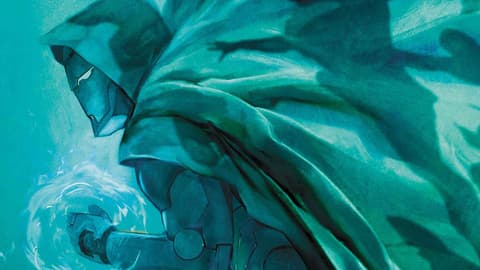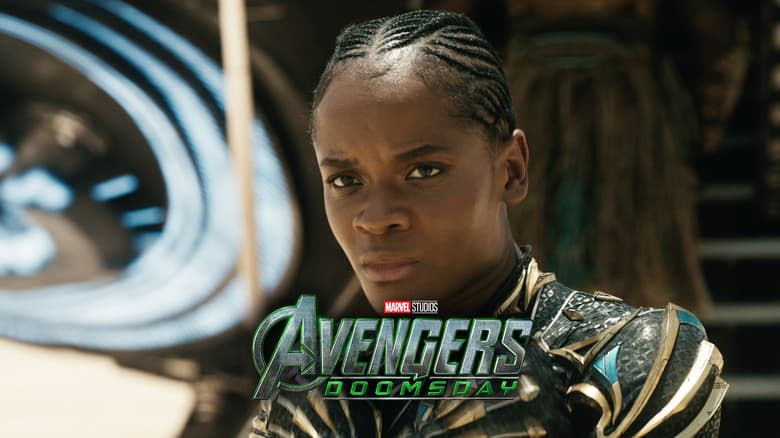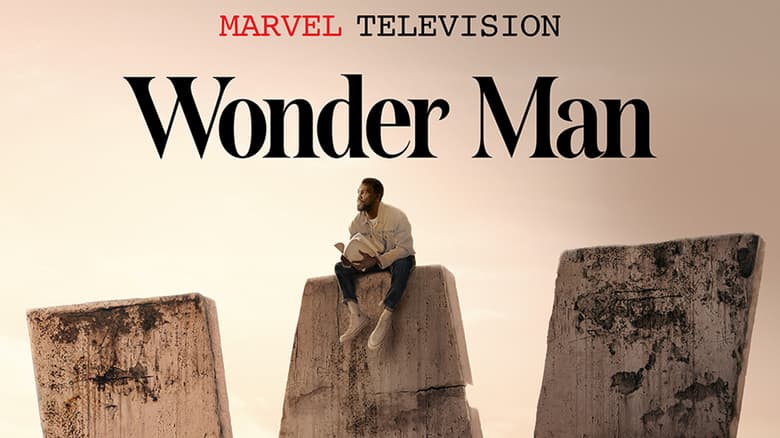Infamous Iron Man: Villains
Brian Michael Bendis walks the fine line of writing Victor Von Doom!

This week, the star of INFAMOUS IRON MAN, Victor Von Doom, began to feel the threat of a perennial foe closing in as Reed Richards made his appearance in issue #8. This version of Mister Fantastic hails from the dead reality of the Ultimate Universe, which presents a unique new take on one of Marvel’s oldest rivalries and a sturdy obstacle for would-be-hero Doctor Doom.
We spoke with writer Brian Michael Bendis about how he manages the challenges of writing a villain-centric series alongside long-time artistic collaborator, Alex Maleev.
Marvel.com: Brian, let’s start things off with talking about the challenges of writing a villain book versus your more typical hero book.
Brian Michael Bendis: Well, we have someone who is arguably the biggest villain in the Marvel Universe who wants to attempt to redeem himself. This is the man with the biggest hole that he’s dug for himself and [he] is going to try and crawl out of it. That is something I have been dying to do for years. I can’t tell you what year I wrote down this idea, but I can’t think of anyone who would be better suited to attempt this with and be more difficult. You have to live inside his head and approach it from the perspective of knowing everything that he’s done. There is no falling back on something like “Oh, he’s got amnesia!” He knows everything that he did, he knows where all the bodies have been buried, and he is still going to climb out of it. That is the biggest challenge; it’s looking through that perspective that is oh-so-different than mine on every level.
Marvel.com: Despite the challenges, there are some rewards to it, right?
Brian Michael Bendis: You know, it’s funny. My favorite thing that I do with this book that is so different than any other title I’ve ever written is there are a lot of quiet moments with Victor; I think more than we’ve ever seen before. I mean, there are other books that have shown him with quiet moments, and that’s well established that there is public Victor and private Victor, but this is all Victor’s interior. We’re seeing Victor in some personally strenuous circumstances, but I try to find places where the “old Victor” can pop out just for a little bit: “Unhand me, woman!” You know those lines. That is how he speaks when he is angry, and I’m not sure it’s something that would go away just because he decides to be a better person. So, writing that is a lot of fun. I literally go “Ok, now I have to write a ‘Victor is a [expletive] part.’”
Marvel.com: Apart from the fun in writing Doom’s voice, what’s the greatest challenge to tackling the Lord of Latveria?
Brian Michael Bendis: [Laughs] I’d say looking at the story through his perspective and finding empathy—not sympathy, but empathy. I think that’s the hardest thing with a “villain book.” You have to find that thing to which you are emotionally connected, or at least, understand where they are coming from so you can use that for yourself in your writing.
It’s so funny. In comics, it’s such a unique thing to have a character like this, but it is the norm in television from Tony Soprano to Walter White—characters with a lot of layers, but [who] are making their money with criminal activity. As the writer of “The Sopranos” would say, “people will watch as long as they are good at their job.” You want to watch Victor try to crawl out of a hole because oh my God! That’s like hearing a David Blaine stunt is about to happen! Who could not watch that?

Infamous Iron Man #9 cover by Alex Maleev
Marvel.com: Now, you mentioned your interest in seeing villains dig their way out of impossible holes. I know you touched on this a bit, but do you find you connect with this on a personal level that translates into Victor’s story?
Brian Michael Bendis: No…I mean, that would be ridiculous of me to say “Oh, I crawled my way out of a hole or two in my day.” Everyone has said “I need to fix this or that,” you know? I think anyone can relate to the idea that when you do fix a mistake, it’s the best feeling in the world. Don’t you feel great when you call up a friend and go “Hey, remember that thing you heard? It’s not true…I love you.” Then it goes away, right? What a lovely thing that is, right? So, imagine that experience, but instead of it being between your friend and you, we’re talking about your entire life and the reality of the world depends on you healing this mistake. As far as Victor goes, “Could he do it? Could he honestly do it?” In every issue, he is moving two steps forward one step back, but he is getting closer.
Marvel.com: This leads right into my next question! Naturally, we have all made mistakes, like you were mentioning. Some of us have even made some truly awful ones; but one of the things that I was thinking about, particularly in relation to where Victor was and where he is trying to go, is there a point of no return? Is there a point where the readers cannot, or dare I say should not, connect with the villain, given how horrible their past actions were?
Brian Michael Bendis: Yeah! Well, I should say yes, but with Victor—you see, the really big “gift” that’s given to me with Victor and the reason why I think people are more forgiving, for lack of a better word, with him is because they know the story of his past. They know his Romani past, they know about his mother, and they know what she did to him. Once you kind of understand where it all started from, you’re kind of like “Okaaaay. This little boy is trying to escape from this hell,” and you’re rooting for him. That is really where people’s heads go. It is never too late in a lot of people’s eyes.
Marvel.com: I see you’re also turning the screws on this setup in bringing back Ultimate Reed Richards, aka The Maker. In this instance, we are seeing a sort of inverse of Doom: a once-hero now-turned villain. Was it too much to resist pairing these decades-old antagonists against each other again?
Brian Michael Bendis: I mean that wasn’t in the initial planning of when I wanted to do this book, but once you start putting all the cards out, you start seeing all 52 of those cards laid out and start going “Oh my God! There is an evil Reed and a trying to be good Doom!”
I remember I called [editor] Tom Brevoort and I said, “I can’t think of a reason not to do this. It’s just too good. There [has] got to be something that I’m not considering, you know this has got to be done before or something.” I almost wanted Tom to tell me “Oh, this has been done before” and I would have been freed of that burden. But instead, he responded, “Yeah, I think we have to do that. For people who are desperately missing the Fantastic Four, there is a little something for all of us.” Then what happened—unplanned—was an emotional Fantastic Four story. Here they are trying to re-discover themselves and find out who they are without the tropes of that other book. That’s fun to write and it’s very in-tune with the “adultness” that the other book had. It’s a little more emotionally sophisticated in INFAMOUS IRON MAN than maybe a book about the teenagers would be because we are dealing with serious issues.
Marvel.com: One last question for you, Brian. I know that you’ve said before that this story has a definitive beginning, middle, and end. Where are we right now in Doom’s redemptive arc? Any hints as to how it’s going to end for one of Marvel’s most infamous villains?
Brian Michael Bendis: Mmmm. I would say past the half way mark. Truthfully, you are going to love this, this is a great last line of an interview that really doesn’t answer the question. It will end in the only way it could.
Marvel.com: I think you might be right about that!
Brian Michael Bendis: I swear to God, the ending I pitched was like, “Could I get there?” And nothing has moved it. There is no other ending in sight. Maybe it will change tomorrow, and sometimes that does happen. You think you know the ending of the story and you hear a lot of writers talk about that—knowing their ending before they start. This ending is powerful. I even shared it at the Marvel retreat a year ago, which was before the book had even shipped. That’s how sure was of where the story was going to end. And it hasn’t [changed]—which is very unusual for me! I try to leave an open mind at heart, because I want to be surprised. And this one? The only surprise has been how fun the journey is to write, but the ending is still the ending.
Continue to follow Doom’s journey of redemption in INFAMOUS IRON MAN #9 by Brian Michael Bendis and Alex Maleev on June 28!
The Daily Bugle
Can’t-miss news and updates from across the Marvel Universe!






